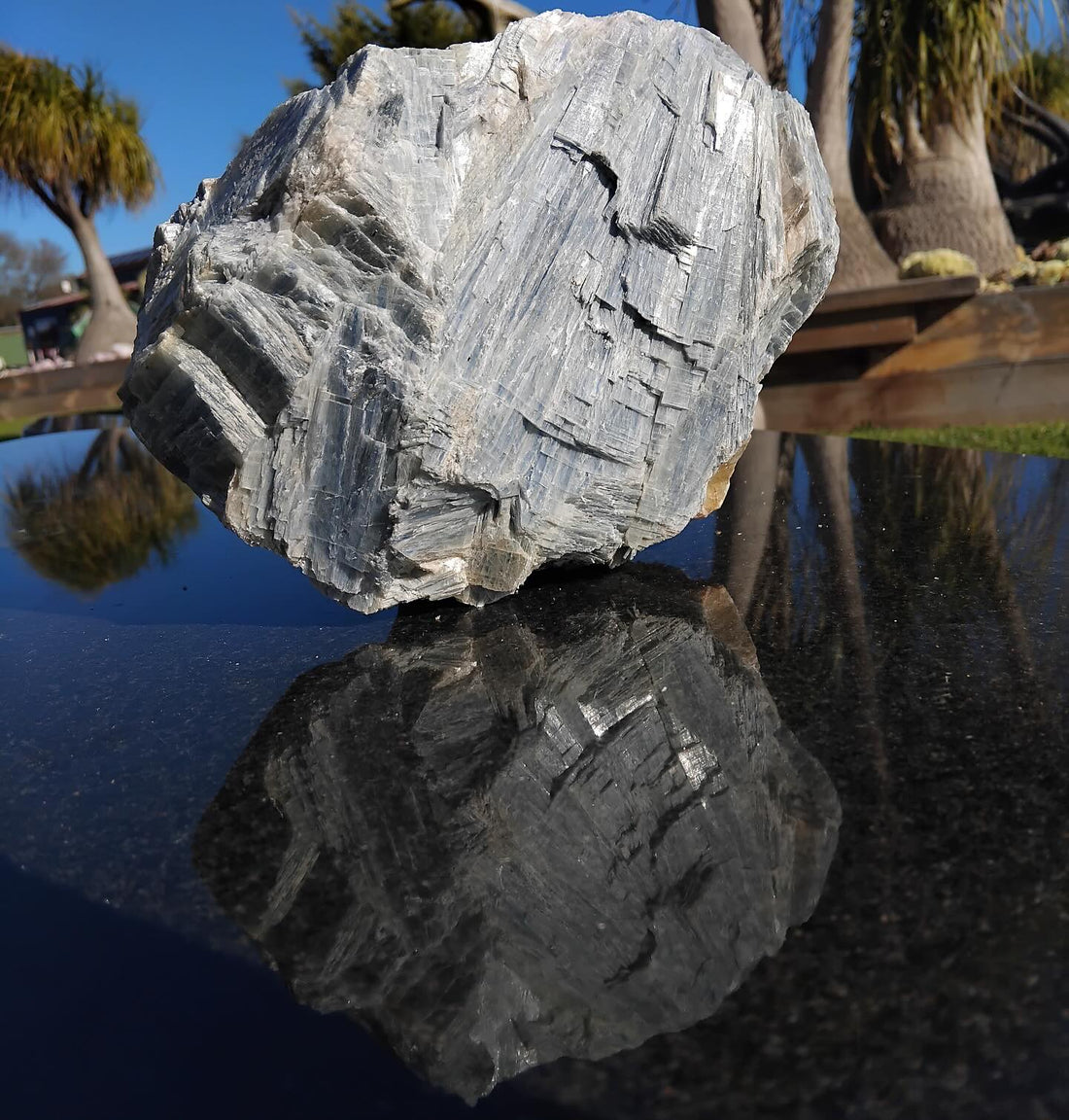
The Fascinating World of Blue Kyanite
Share
Blue Kyanite is a captivating mineral known for its striking blue colour and unique properties. This aluminosilicate mineral, with the chemical formula Al(_2)SiO(_5), is primarily found in metamorphic rocks. Its name is derived from the Greek word “kuanos,” meaning blue, reflecting its most common coloration.
Formation Conditions
Blue Kyanite forms under high-pressure and high-temperature conditions typical of regional metamorphism. This process occurs during mountain-building events where tectonic plates collide, generating immense pressure and heat. Kyanite is commonly found in aluminum-rich metamorphic pegmatites and sedimentary rocks. Pegmatites are coarse-grained igneous rocks that form during the final stages of magma crystallization, rich in rare minerals and elements.
The formation of Blue Kyanite involves the transformation of pre-existing minerals in sedimentary or igneous rocks under extreme conditions:
- Pressure and Temperature: The high-pressure environment, often exceeding 4 kilobars, and temperatures ranging from 400°C to 600°C, cause minerals to recrystallize and form new mineral assemblages.
- Chemical Reactions: During metamorphism, chemical reactions between minerals in the rock lead to the breakdown of original minerals and the formation of new ones, including kyanite.
- Crystal Growth: Kyanite crystals grow as the rock undergoes continuous pressure and temperature changes, typically forming elongated, bladed shapes due to directional pressure.
Kyanite is often associated with gneisses and schists, types of metamorphic rocks characterized by their banded and foliated textures, respectively. These rocks provide a stable environment for kyanite to form and grow. The formation of kyanite is linked to significant geological events, such as the collision of continental plates during the formation of supercontinents like Pangaea.
Kyanite often occurs alongside other metamorphic minerals such as garnet, staurolite, and andalusite, which form under similar conditions and provide clues about the metamorphic history of the host rock.
Physical Properties
Kyanite is known for its anisotropic properties, meaning its hardness varies depending on the crystallographic direction. It has a Mohs hardness of 4.5-5 parallel to one axis and 6.5-7 perpendicular to that axis. The mineral typically forms bladed crystals and exhibits perfect cleavage along the {100} plane and good cleavage along the {010} plane.
Optical Properties
Optically, kyanite is biaxial (-) with high relief. It has a refractive index ranging from 1.712 to 1.734 and displays trichroic pleochroism, showing different colours when viewed from different angles. This optical behaviour adds to its allure, making it a favourite among gem collectors and jewellers.
Uses and Applications
Blue Kyanite is not only valued for its beauty but also for its industrial applications. It is used as a raw material in the manufacture of ceramics and abrasives. Additionally, it serves as an important index mineral for geologists to trace metamorphic zones.
Metaphysical Beliefs and Benefits
Blue Kyanite is revered in the metaphysical community for its powerful healing properties. It is believed to:
- Enhance Communication: Stimulates the throat chakra, aiding in both written and spoken communication.
- Promote Calmness and Peace: Encourages tranquility and aids in meditation and prayer.
- Stimulate Psychic Abilities: Associated with enhancing psychic abilities and facilitating astral travel.
- Balance and Align Chakras: Known as the “Stone of Alignment,” it helps balance and align all seven chakras.
Blue Kyanite is a remarkable mineral with a rich geological history and diverse applications. Its unique properties and stunning appearance make it a subject of interest for both scientists and gem enthusiasts. Understanding the detailed formation process of Blue Kyanite reveals the complex interplay of geological forces that create this beautiful mineral. While its metaphysical properties offer a range of benefits for those who seek spiritual growth and healing.
References
- Wikipedia: wikipedia.org
- Geology Science: geologyscience.com
- Gemstonist: gemstonist.com
- Crystal Viden: crystalviden.com
- Rock Seeker: rockseeker.com